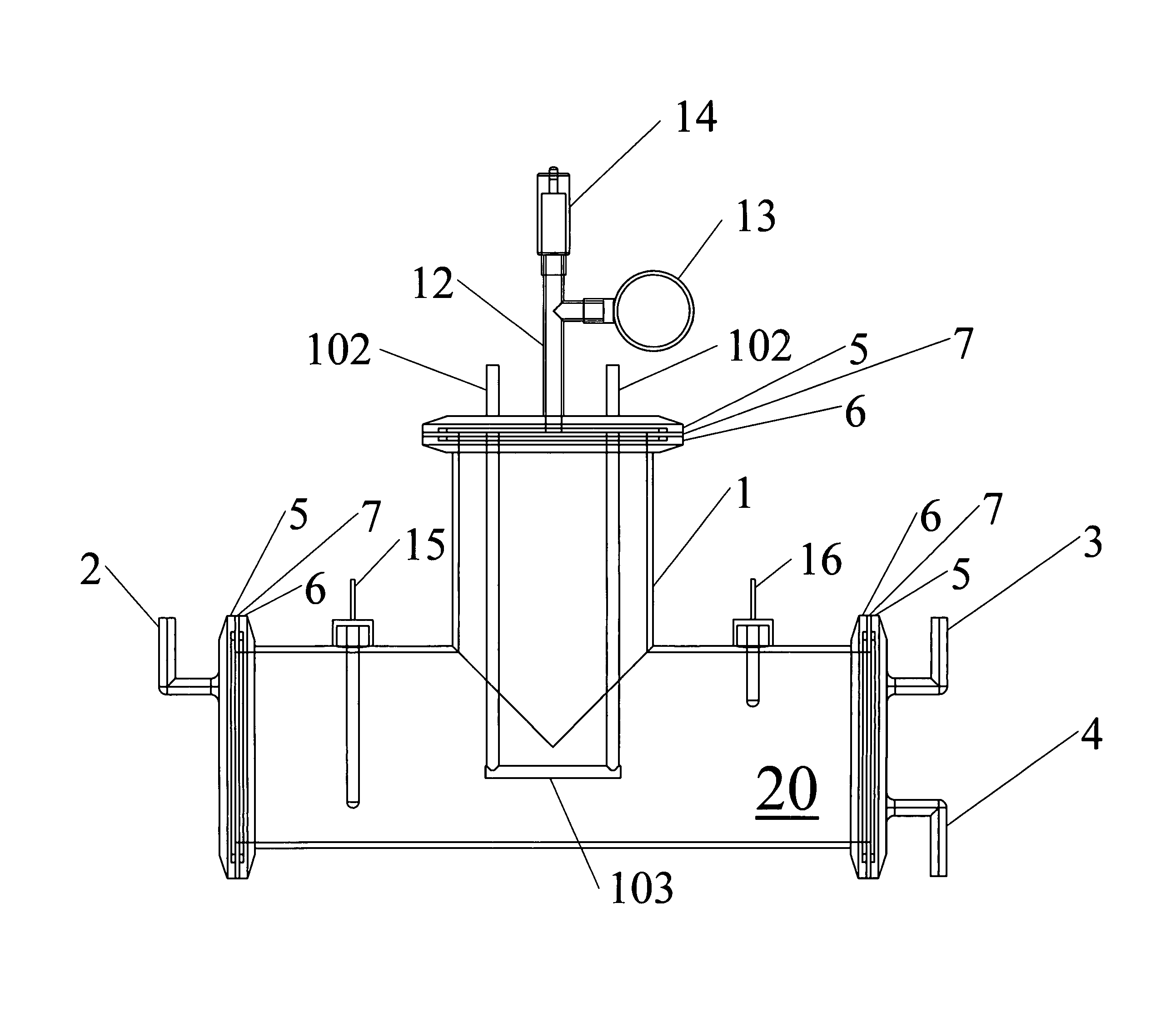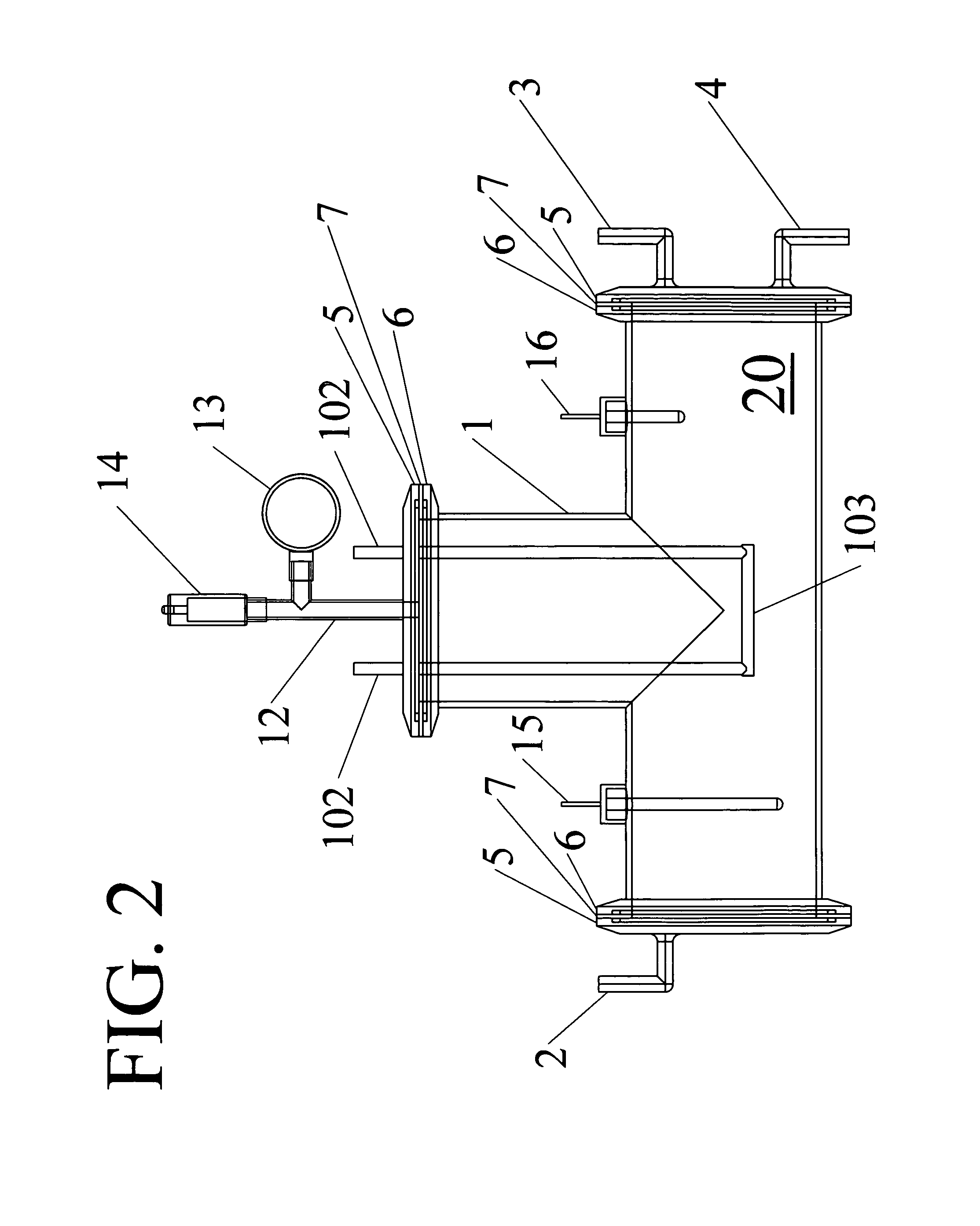Thermoelectric reformer unit for hydrogen production
a technology of thermoelectric reformer and hydrogen production, which is applied in the direction of energy-based chemical/physical/physical-chemical processes, electrochemical generators, chemical/physical/physical-chemical processes, etc., can solve the problem of not likely to occur, and achieve the effect of hydrogen economy, hydrogen-based economy, and avoiding significant capital investmen
- Summary
- Abstract
- Description
- Claims
- Application Information
AI Technical Summary
Benefits of technology
Problems solved by technology
Method used
Image
Examples
Embodiment Construction
[0019]Traditionally thermoelectric materials are applied to electrical power generators and refrigerative coolers. Both applications require hot and cold junctions with different P-N types of thermoelectric materials. Traditionally based on conversion of thermal (heat) energy to electricity (Seebeck Effect) or of electricity to heat energy (Peltier Effect), for a material to have good thermoelectric properties, it must be a good electrical conductor (i.e., with an electric conductivity greater than 1000 S / cm) and a poor thermal conductor (i.e., with a thermal conductivity less than 2 W / m-K). Because some materials (e.g. carbon such as carbon C60, diamond and graphite; carbon compounds or diamond-like materials such as silicon carbide (SiC) and carbon nitride C3N4) are good at conducting both electricity and heat, some scientists had ruled them out as a possible good thermoelectric material.
[0020]However, we could use special characteristics of such high conductivity material and con...
PUM
 Login to View More
Login to View More Abstract
Description
Claims
Application Information
 Login to View More
Login to View More - R&D
- Intellectual Property
- Life Sciences
- Materials
- Tech Scout
- Unparalleled Data Quality
- Higher Quality Content
- 60% Fewer Hallucinations
Browse by: Latest US Patents, China's latest patents, Technical Efficacy Thesaurus, Application Domain, Technology Topic, Popular Technical Reports.
© 2025 PatSnap. All rights reserved.Legal|Privacy policy|Modern Slavery Act Transparency Statement|Sitemap|About US| Contact US: help@patsnap.com



